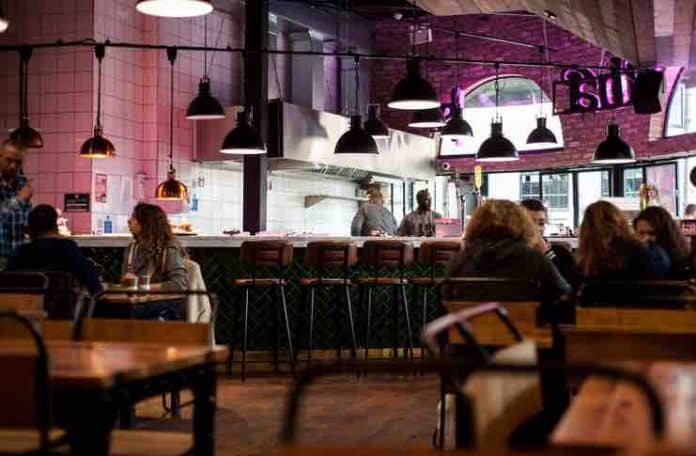The past two years have not been easy on small businesses, especially restaurants and bars. Many people decided to cut down on their expenditures because of COVID-19 related economic constraints. And this gravely affected restaurants.
Some food places were able to cut costs and stay in business during the pandemic. Check out some of the best cheap food spots in New York City to find out more. However, often it takes a lot more than simply cutting costs to survive as a business.
While things are now largely back to normal, it will take a while for businesses to recover from the pandemic completely. This is why it’s so important to leverage new and creative strategies to stay in business and thrive as a restaurant.
In this guide, we’ve outlined some of the best tried-and-tested strategies for innovating and thriving as a restaurant in rough times. Remember that you will have to make a number of tough calls and take measures that will be difficult. However, the key to thriving as a restaurant in these times is to make smart decisions quickly.
So let’s get right to it.
1. Re-analyze your budget and costs
Post pandemic, you might have to do things a little differently than you used to. This means that your expenditures will change. So instead of continuing things like before, regardless of the increase or decrease in prices of goods, take a minute and re-evaluate your budget.
Make a list of food items that are costing you the most money. See if you can tweak the recipes a bit to incorporate cheaper ingredients. Consider the cost of bills, rent, and items of decoration. What can be scrapped without much effect on your business? Perhaps you can move into a smaller location. Maybe you can dim the lights or sell some unused furniture.
Remember that the goal is to trim the fat around your restaurant. Everything that seems unnecessary should be let go of. This might also mean that you will have to lay off some employees.
Once you’ve figured all of this out, it’s time to refocus your budget. Figure out what your breakeven point is. Also, create an estimate of how much one customer spends at your restaurant. From here, you can then start figuring out what you need to spend more on – equipment, ambiance, food, etc.
2. Revamp your menu
A restaurant is all about food. Now clearly, something about your food wasn’t working well for your customers, which is why you weren’t getting a ton of business. Therefore, it makes sense to make changes to the menu to bring people back in.
Your new menu should be fresh and exciting. It should offer a range of new food and drink options that are consistent with your new and improved brand. Also, have a bunch of new staples on the menu and advertise them the most. Create the impression that customers simply have to give your new menu a try because it’s that good.

Make sure to keep your popular food items in your new menu and get rid of items that got a lukewarm reception. You don’t want to alienate your existing customers.
A new menu will also give you the chance to set new prices for your food items. Once you determine, through the first strategy, how much you need to charge for your food, set these prices on your menu.
As a small restaurant, you may not have the budget to create brand new menus that also look pretty and professional. Luckily, PosterMyWall has a brilliant menu maker that you can use to create the perfect menu in minutes.
3. Bring in new equipment
When you’re competing with hundreds of other restaurants that are using state-of-the-art equipment to make their food, it’s important that you do the same. Because if you don’t, you’ll get left behind no matter how hard you try to keep up. Good machines save time and do the same work a lot more efficiently. Therefore, in the long run, they prove to be extremely cost-effective.
Plus, having good equipment in your kitchen also reduces dependence on employees. You can have a few essential people operating the machines and manning the cash register, and streamline the food-making process with the machines.
When Arby’s revamped their restaurant in 2015 to survive in the ever-changing fast-food business, this is exactly what they did. They got a bunch of new ovens with temperature probes to quicken the meat-making process. Before these ovens, employees would have to record oven temperatures 50 to 60 times a day on clipboards, therefore slowing down the serving process. The new ovens helped quicken the process.

4. Take your restaurant online
Every business does better if it has a strong presence on the Internet. The average person spends 145 minutes a day online. This means that by putting your restaurant online, you’re guaranteeing the fact that you’ll get more eyes on your food.
To compete with other competitors, it’s not enough to just have a page or two for your restaurant. You need to curate an entire social media and website marketing campaign to get noticed.
With a website
Start with creating a website. If you have one already, revamp it. Add your new menu, new colors, and a whole new vibe. Add pop-ups and exciting CTAs to your homepage that tell your customer what you’re offering. CTAs are call-to-action buttons that tell your customer what they should do after reading a particular piece of information. Have a new drink on the menu? Announce it with fireworks on your website, and then add a CTA so people can order it immediately. Remember, if you sound amped up about your food, your customers will be too.
Moreover, introduce an option for people to order through your website. Finally, add a “Contact Us” landing page, where people can ask questions and leave reviews.
With social media
Having a website isn’t enough for your online marketing. You need to promote it as much as possible through social media. Create dedicated Facebook and Instagram pages. Update them regularly with new food items, discounts, important news, etc. Use features like stories and Instagram reels to get creative with your promotion.
Use social media to engage with your customer base. Ask them to weigh in on new food items. Listen to them, and make changes accordingly. Remember, your goal is to serve the community and the best way to do that is by listening to what it wants from you.
Remember to also post regularly on your Facebook and Instagram pages. The key to high engagement is regular posts. So update your pages every day and keep your customer base updated on everything you’re up to. Here are the best times to post on Facebook and Instagram:
- Facebook: 8 am to 12 pm – Tuesdays and Thursdays
- Instagram: 11 am – Wednesdays
5. Get email addresses for greater integration
There’s nothing like communicating directly with your customer, and that’s what you get with email marketing. While social media is great, it doesn’t offer the same personal touch that emails do. Emails also ensure that your target audience sees your content. Therefore, for a restaurant looking to bring in more customers, email marketing is a must.
Build your email list at every opportunity you get. Start a newsletter and advertise it on your website. Ask people to sign up to receive exclusive deals and promotions every week.
Mike Marcolin, the owner of QB Sports Bar & Grill, has nailed his email list-building process. He believes in the importance of incentivizing customers to share their email information. He does this by offering people a chance to win a sports jersey or a $50 gift card if they provide their email addresses. He also regularly passes ballots to the customers in his restaurant. If people add their information to the ballot, they get a chance to win free tickets to a hockey game.
Send out an email blast at least once a week. Send more when you have an exciting promotion coming up, or if you’ve just launched a new food item. Remember that your email should add value to your customers’ lives. So try not to be too spammy.
6. Be as accessible as you can
The key to a restaurant’s success is how available it is to its customers. If people don’t think you’re a reliable business, they will simply go elsewhere. More often than not, in trying times, people are looking for some reliability and accessibility. And if you’re able to provide them that, then you can build a loyal customer base.
Chipotle implemented this strategy by introducing a “Cipotlane” at every outlet. This was a pick-up-only lane, where people could come and pick up their orders after placing their order and paying through their website. This is incredibly convenient because it saves people waiting time. They simply have to drive up, grab their food, and go.

Another important point to remember here is to stay open for as many hours a week as you can. The longer you stay open, the more customers you attract. You can even offer time-sensitive deals such as lunch deals and midnight deals.
Final thoughts
These are difficult times for a lot of businesses. But if you implement the strategies above, and try to balance your costs, your restaurant should be a bustling hub of activity in no time. Remember, people are always looking for tasty and reliable options when it comes to food. So switch up the old ways of doing things and give the customers what they want.
Jennifer Bell is a freelance writer, blogger, dog-enthusiast, and avid beachgoer operating out of Southern New Jersey.




